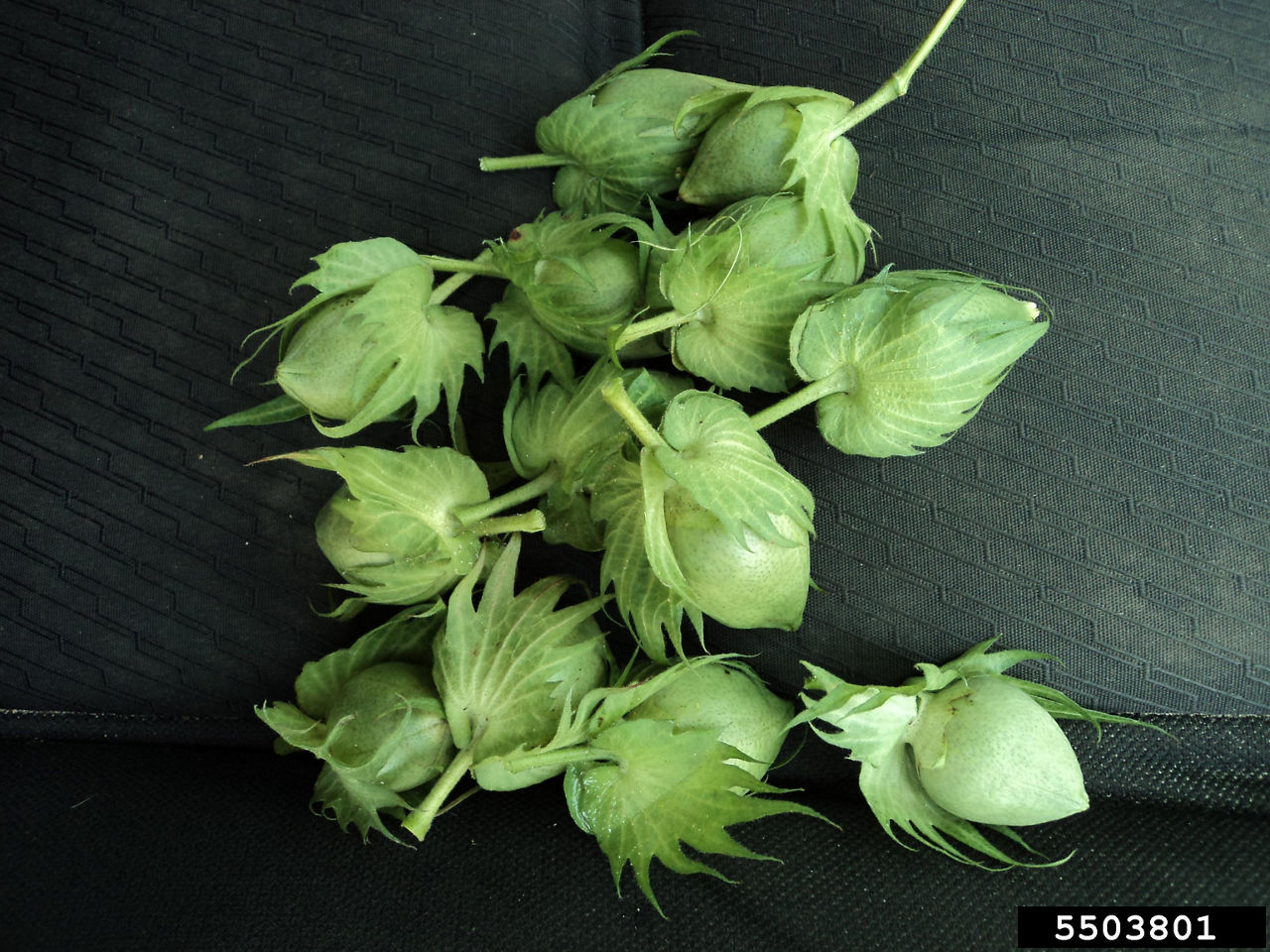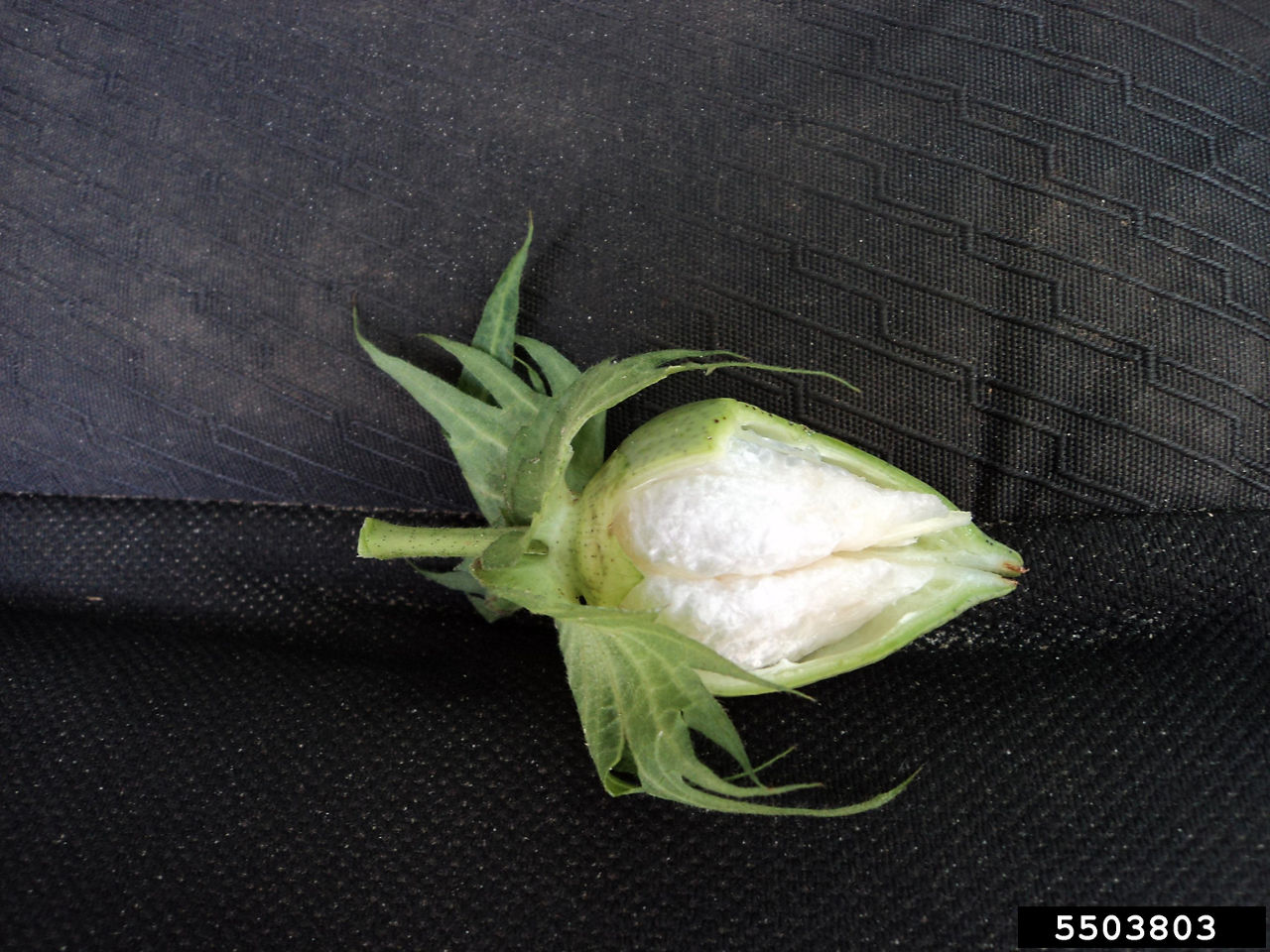Boll Formation and Fiber Quality
Fruit retained during heat stress may have reduced seed number and boll size. Consequently, boll weight is reduced, and lint yield reductions of 98 lbs/acre have been reported as temperatures increase 1.8°F above optimal ambient air temperatures.2 Even in irrigated fields, cotton farmers experience yield loss related to heat stress.
Undesirable traits – high micronaire values and fiber strength – are reported with prevailing hot temperatures. Of all the fiber formation stages, initial fiber elongation is most sensitive to temperature stress. Photosynthates composing fiber cell walls are vulnerable to temperature swings, and even temperatures sustained near 70°F at the fiber elongation stage can reduce fiber quality.2
Drought Stress
Whole-plant water loss increases, and water use efficiency decreases with elevated temperatures. While moisture and heat stresses often coexist on the field level, they have been widely studied separately in cotton. Observations have shown combining moisture and heat stress has an additive effect on physiological and biochemical processes.2 Drought stressed plants have reductions in transpiration and turgor pressure due to stomatal closure to preserve moisture. Heat stress further reduces photosynthesis efficiency by affecting Photosystem II and reducing chlorophyll fluorescence.
Management and Mitigation
Cotton Product Selection and Genetics. Cotton breeding programs should focus selection efforts on cotton products with success under both moisture and heat stresses. While markers and identifiers for tolerance genes are being researched, farmers can select cotton products with a history of performing well under stress. These plants have a response system to stress working to stabilize growth and development, retain bolls, maintain excellent yield potential, and still produce excellent quality fiber.
Spray Applications. Plant growth regulators are used in cotton to control rank growth, but they can also be used to quickly enhance antioxidant defense. Ascorbic acid and salicyclic acid are used to fortify cell walls and could increase yield potential.2
Planting Date and Maturity. Early maturing cotton products seem to be more negatively affected by heat stress. Farmers of rainfed cotton fields should adjust planting time to try and align flowering and boll formation to occur during cooler average temperatures. Planting date adjustment had less effect on irrigated cotton.
Escape Heat. Cotton grown at higher altitudes can escape some heat stress even with greater than optimum temperatures. Reduced humidity and cooler nighttime temperatures at higher elevations help plants recover and carry out normal respiration cycles and carbohydrate accumulation. The indeterminate growth habit and fruiting pattern of cotton can be beneficial if heat stress is short or replaced by optimal temperatures during flowering stage. Some new growth may escape the effects of heat.
Conclusion
High heat events cause a stress response in cotton. This stress response and ability to cope with high heat depends on the cotton growth stage. Additionally, the severity and length of the heat event determines the cotton crop response. Although not in control of weather, cotton farmers can mitigate some of the effects of heat stress.
Sources
1 Brown, P. 2008. Cotton heat stress. University of Arizona Extension. AZ1448
2 Zafar, S.A., Noor, M.A., Waqas, M.A., Xiukang, W. 2018. Temperature extremes in cotton production mitigation strategies.
3 McMichael, B.L., and Burke, J.J. 1994. Metabolic activitiy of cotton roots in response to temperature. Environmental and Experimental Botany. Vol. 34, No 2, pp. 201-206.
5016_S1


